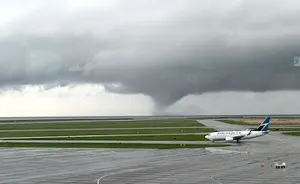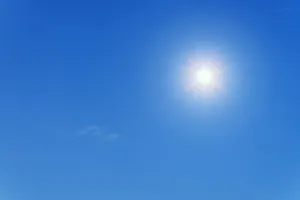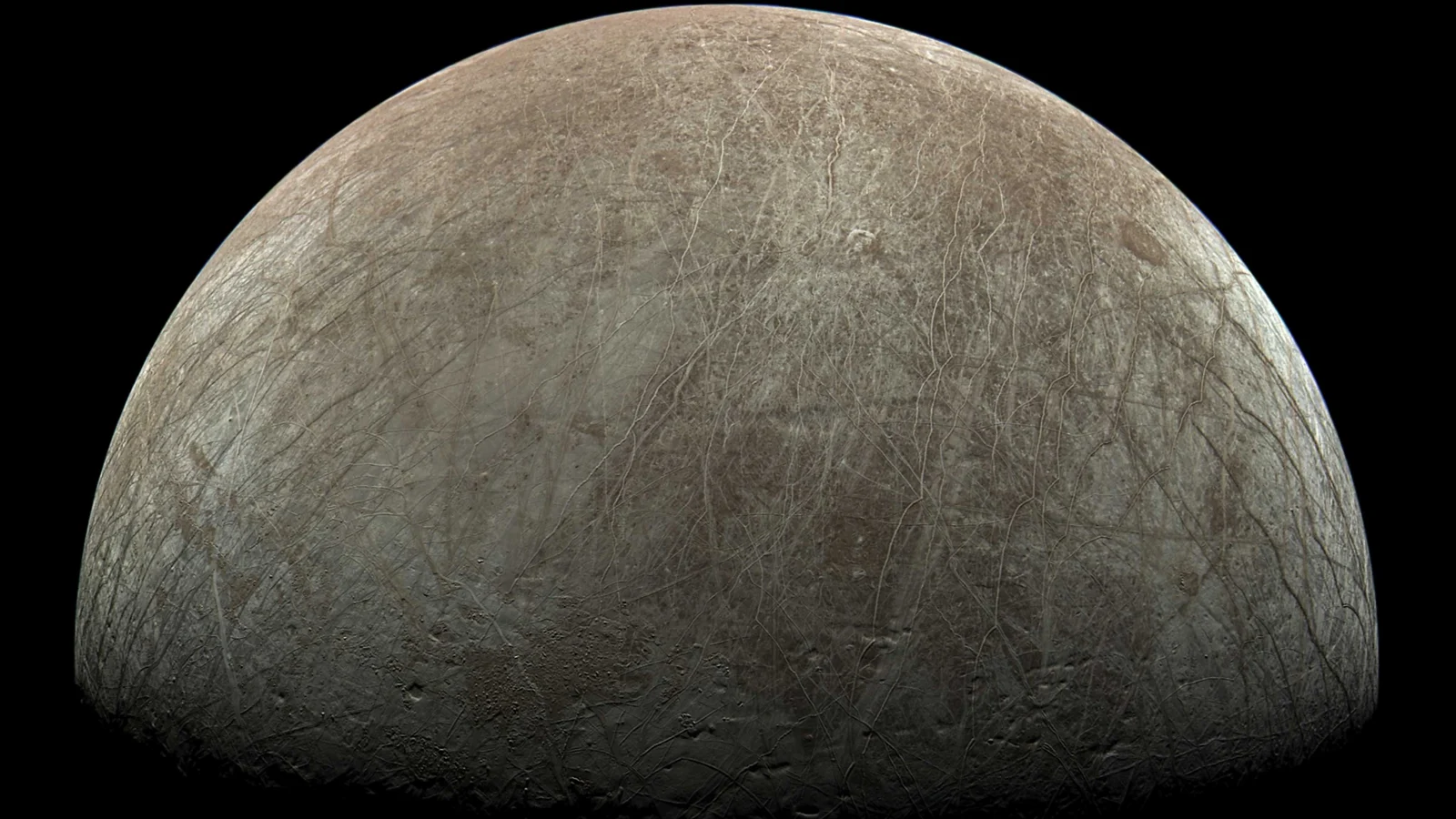
See our best-ever look at Jupiter's moon Europa
Citizen scientists have given us our most amazing looks at imagery from the Juno mission.
At the end of September, NASA's Juno probe made a close pass by Jupiter's icy moon Europa. It was the closest flyby of the moon in over 20 years, and it returned the best views of Europa that we have ever seen.
The Juno spacecraft has been orbiting around Jupiter for over six years now. In that time, it has made 45 close passes by the planet — 'perijoves' — and it has also swung past two of its largest moons.

This graphic depicts the Juno spacecraft's path as it passes through the Jupiter system. Each of these passes is known as a perijove, and is denoted by "PJ" and the number of the close pass. The gray orbits represent Juno's primary mission, with the different coloured orbits being the spacecraft's extended mission. Juno passed by Ganymede on PJ34 and Europa on PJ45, and it will make close passes by Io on PJ57 and PJ58. Credits: NASA/JPL-Caltech/SwRI
On its latest perijove, on September 29, 2022, Juno passed by the smallest of Jupiter's Galilean moons, Europa. This small moon is of great interest. With all the evidence we've seen over the years, there is a good chance that Europa has a subsurface ocean of liquid water beneath its icy crust. This makes it one of the most likely locations to find extraterrestrial life in our solar system.
According to NASA, when Juno flew within 352 kilometres of Europa's surface, it was the closest any spacecraft had come to the moon since NASA's Galileo mission in January 2000. With Juno's more advanced camera, it captured the highest resolution images we've ever seen of Europa's surface features.

This view of the icy surface of Europa was captured by NASA's Juno spacecraft during a flyby on Sept. 29, 2022. At closest approach, the spacecraft came within a distance of about 352 kilometres. Credits: NASA/JPL-Caltech/SWRI/MSSS
"This segment of the first image of Europa taken during this flyby by the spacecraft's JunoCam (a public-engagement camera) zooms in on a swath of Europa's surface north of the equator," NASA said on their website. "Due to the enhanced contrast between light and shadow seen along the terminator (the nightside boundary), rugged terrain features are easily seen, including tall shadow-casting blocks, while bright and dark ridges and troughs curve across the surface. The oblong pit near the terminator might be a degraded impact crater."
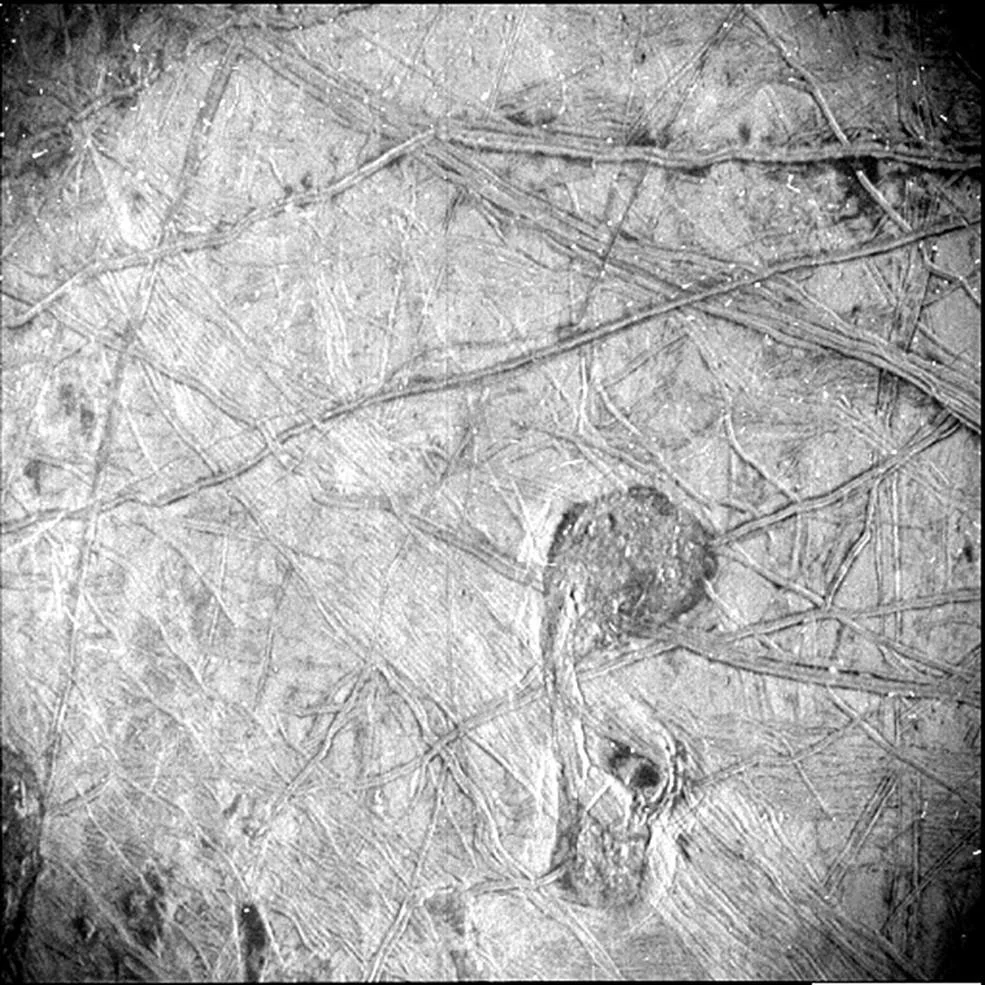
Surface features of Europa are revealed in extraordinary detail in this image obtained by Juno's Stellar Reference Unit (SRU). Credits: NASA/JPL-Caltech/SwRI
"The image covers about 93 miles (150 kilometers) by 125 miles (200 kilometers) of Europa's surface, revealing a region crisscrossed with a network of fine grooves and double ridges (pairs of long parallel lines indicating elevated features in the ice)," NASA said about the image above. "Near the upper right of the image, as well as just to the right and below center, are dark stains possibly linked to something from below erupting onto the surface. Below center and to the right is a surface feature that recalls a musical quarter note, measuring 42 miles (67 kilometers) north-south by 23 miles (37 kilometers) east-west. The white dots in the image are signatures of penetrating high-energy particles from the severe radiation environment around the moon."
While the two above pictures were processed by mission scientists, the true treasure-trove is in the image galleries produced by citizen scientists. All JunoCam data is provided on NASA's website. Anyone from the public can download the raw images from this site, and then process those images to highlight or reveal the different features contained within.
This case is no different. Björn Jónsson, a self-described software engineer interested in solar system exploration, and advanced amateur planetary image processor, used the September 29 flyby images to make this:

This view of Europa was created by processing an image JunoCam captured during Juno’s close flyby on Sept. 29. Credits: Image data: NASA/JPL-Caltech/SwRI/MSSS Image processing by Björn Jónsson (CC BY-NC-SA 2.0)
"Starting with our flyby of Earth back in 2013, Juno citizen scientists have been invaluable in processing the numerous images we get with Juno," Scott Bolton, the principal investigator of the Juno mission at the Southwest Research Institute (SwRI), said in a NASA press release. "During each flyby of Jupiter, and now its moons, their work provides a perspective that draws upon both science and art. They are a crucial part of our team, leading the way by using our images for new discoveries. These latest images from Europa do just that, pointing us to surface features that reveal details on how Europa works and what might be lurking both on top of the ice and below."
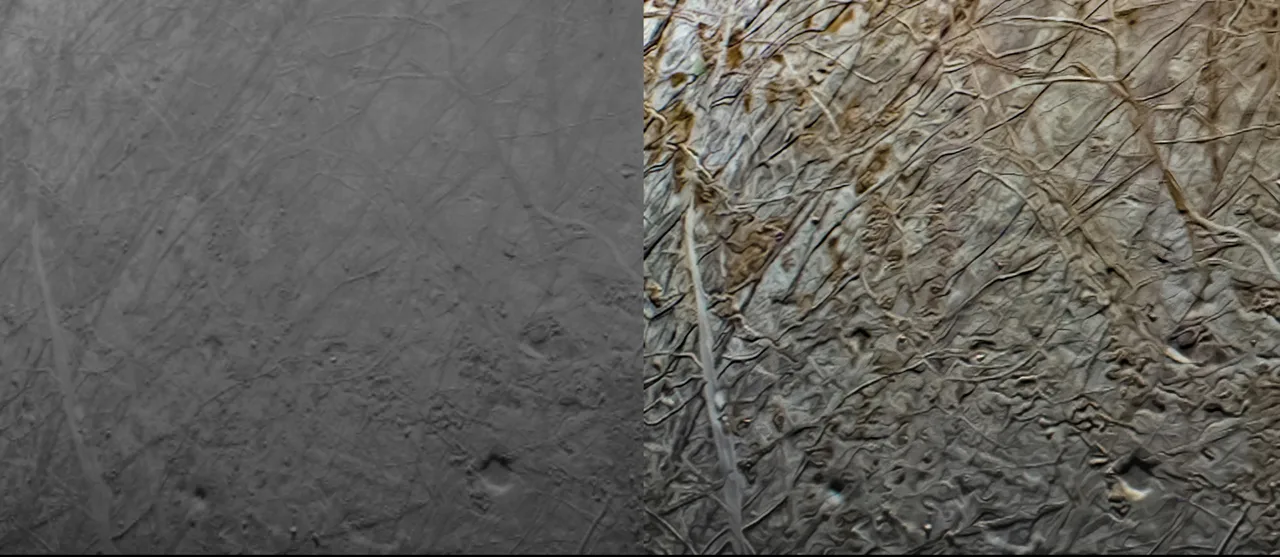
This pair of images shows the same portion of Europa as captured during Juno's Sept. 29 close flyby. The left image has minimal processing by Kevin M. Gill. The image on the right has been enhanced by Navaneeth Krishnan S to cause the larger surface features to stand out. Credits: Image data: NASA/JPL-Caltech/SwRI/MSSS Image processing: Kevin M. Gill and Navaneeth Krishnan S (CC BY 3.0)
"Juno's citizen scientists are part of a global united effort, which leads to both fresh perspectives and new insights," Candy Hansen, lead co-investigator for JunoCam at the Planetary Science Institute, told NASA. "Many times, citizen scientists will skip over the potential scientific applications of an image entirely, and focus on how Juno inspires their imagination or artistic sense, and we welcome their creativity."
Thumbnail image courtesy NASA/JPL-Caltech/SwRI/MSSS/Björn Jónsson







